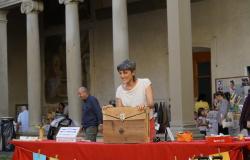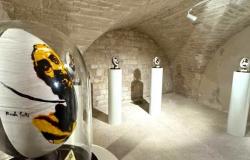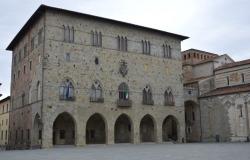
TRENT. Almost 40 million for the purchase of new trains for the Valsugana and for buses routed to the system Bus Rapid Transit of the valleys of Fiamme and Fassa. Work is underway on the vehicle fleet, the construction sites in Cavalese are progressing but overall there seems to be some uncertainty surrounding the BRT project, even with the Olympics on the horizon.
A project which, initially, had little convincing in the territory (Article here), so much so that 130 observations had arrived at the provincial table, of which 68 considered relevant (13 acceptable and 29 negotiable). The resources amount to 60 million euros (but the cost could be increased to 90 million due to price increases) with the expectation of carrying out infrastructure works and lanes reserved for the passage of a fleet made up of 48 new “green” vehicles (30 electric and 18 biomethane) on the Fiemme route -Fassa and for the renewal of rolling stock (Article here).
Then in March last year came the Preliminary design document which contains the indications of the lanes reserved for “green” vehicles (electric or biomethane buses), of the stops and of the installation of intelligent traffic lights (bus gates) with the annexed IT management system, for the routes defined as priority within the scope of the project. Mainly the routes between Predazzo and the ski jumping area and the area near San Giovanni di Fassa, but also for the connection with the Val d’Ega and Alto Adige. A project that also concerns, more or less directly, the Trento station and the electrification of Valsugana.
The objective is to improve newly developed public road transport and interventions should concern a total of 12 sections along the main road crossing the Avisio valleys, for a linear development of approximately 12 kilometresin addition to the works to rationalize the road system crossing inhabited centres. The hourly capacity, which can be modulated, is between 200 and 1,100 passengers per hour in each of the two directions.
The collection of observations, explained president Maurizio Fugatti, made it possible to acquire information, suggestions and constructive criticism with the dual objective of ensuring that the work is able to respond to the peculiar characteristics of local mobility.
But in the last year he seems to have moved little. “Some comments were made, some of which were taken on board but we were no longer called or involved,” he explains Joseph Detomas. The Procurador of the Comun General de Fascia he had coordinated the table for the local participation phase. “There had been many efforts to find a balance, including environmental protection.”
In Val di Fassa there seems to be a bit of pessimism on the completion of many works before the Olympics. “The area offers many beds to support the Val di Fiemme”, highlights Detomas. “The availability of accommodation facilities was an essential requirement to be able to host this great event. The connections are strategic because an increase in traffic is expected in a high season period”.
Meanwhile, the Province has given the green light to the purchase of new trains for the Valsugana line and buses aimed at the BRT system: 36,506,937.39 euros that Piazza Dante granted to Trentino Trasporti. A transfer of resources made available by national government with a view to the Milan Cortina 2026 Olympic and Paralympic Games.
“These are resources that are added to those already allocated for these purposes in the last two years, over 46 million for new trains and 28 million for new buses for the BRT system”, the comment of thecouncilor Mattia Gottardi. “These are important investments with a mix of provincial and state resources that will ensure that Trentino has an efficient and integrated public mobility system throughout the territory even once the games have concluded.”
In December they were instead delivered by Trentino Transport the works to create the new one Cavalese intermodal centre (contract amount is 11,942,095.56 euros of which 294,989.33 euros for safety reasons). A very large project which involves the construction of three infrastructures including the new public transport bus station, the underground modal interchange car park and the new Trentino Trasporti garage equipped for charging electric buses.
“The construction site is proceeding in the best possible way and the timetable is being respected,” he says Sergio Finato, mayor of Cavalese. “These works are not of exclusive interest for the Olympics but are important for the territory. These are public services that remain available after the Games. An infrastructure that focuses on sustainable mobility and which also allows the historic center to be redeveloped” (Article here).
While work continues in Cavalese, some doubts emerge on a more general level. In recent days there was also a point with the Province “but – the words of Fabio Vanzetta, president of the Val di Fiemme territorial community – I believe that very few projects will be ready for the Olympicsperhaps and we hope at least the Predazzo-Tesero section and some technical work between the traffic lights and the stops.” We are now two years away from the Games and time is running out. “The impression is that almost nothing has started, but there were the awareness and expectation that a lot of infrastructure would follow the big event.”
In Val di Fiemme it is lower worry on any critical issues regarding traffic and mobility. “We don’t consider the Brt decisive – adds the president of the territorial community – furthermore, Olympic travel uses another system which is managed separately from the central organisation”.
The influx of tourists plays a rather central role on traffic venuesthere between Tesero and Predazzo work continues to redevelop the structures to Olympic standards, but we are also moving towards a strong reduction in capacity. At least a halving of spectators, compared to the World Cup for example.
For the Lake Tesero you go down dto 40 thousand to 20 thousand peoplewhile in that of Predazzo the limit passes from 15 thousand to 5 thousand seats (Article here). “These are choices made by the organization and this avoids overcrowding and therefore a different flow rate on the roads of the area. An aspect that will certainly have an impact on mobility”, concludes Vanzetta.





